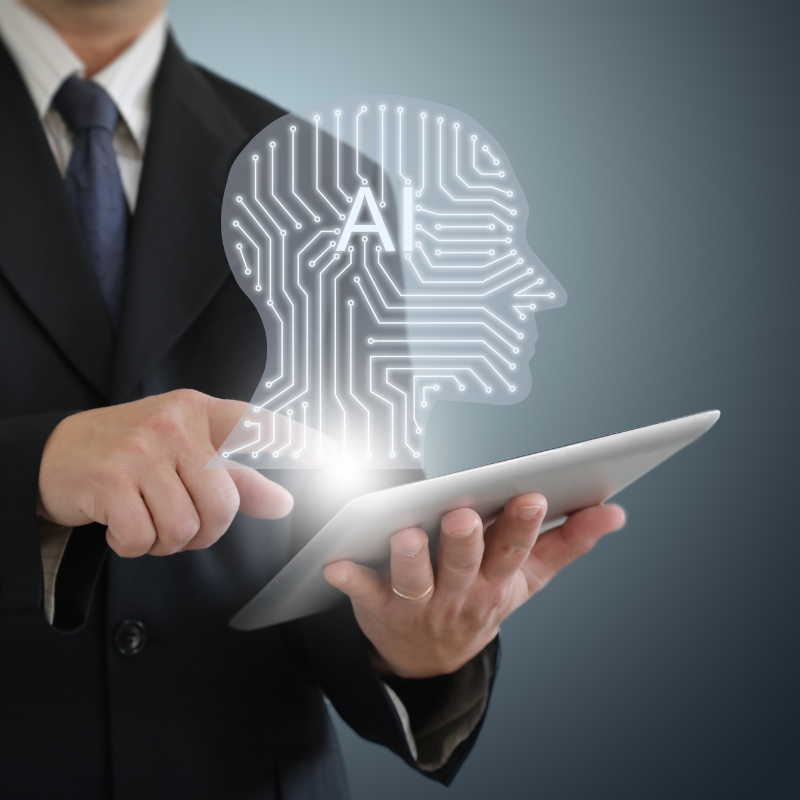What is Agentic AI? Plus, How to Secure It

Artificial intelligence has evolved from a simple tool into an autonomous decision-maker, capable of adapting, planning, and executing tasks with minimal human input. This new wave of AI, known as Agentic AI, is transforming industries by increasing efficiency, automating complex workflows, and handling tasks once reserved for human intelligence.
However, with greater autonomy comes greater security risk. As these AI systems interact with sensitive data, automate critical operations, and generate outputs that could impact compliance or cybersecurity, they introduce new attack surfaces that traditional security models were never designed to address. Cybercriminals are already weaponizing AI—from automating phishing campaigns to developing malware that adapts in real-time.
What is Agentic AI?
Agentic AI represents a new frontier in artificial intelligence—one where systems don’t just follow commands but think, plan, and act autonomously. Unlike traditional AI, which requires users to input specific prompts and define exact tasks, agentic AI continuously refines its actions based on real-world feedback, adapting dynamically without ongoing human oversight.
This capability revolutionizes industries by allowing AI to handle complex workflows that previously required human decision-making. Agentic AI identifies problems, executes solutions, and optimizes its approach in real-time, making it a powerful force for efficiency and automation.
How Agentic AI Differs from Traditional AI
Most AI applications today operate reactively—meaning they process a request, provide a response, and then wait for the following prompt. Even sophisticated generative AI models, like ChatGPT, still require users to drive their interactions. Agentic AI, on the other hand, acts proactively by setting its own objectives, adjusting based on new data, and making autonomous decisions. Which, as you can guess, is both a blessing and a potential for disaster.
This shift reduces human intervention and allows AI to function more like an independent agent rather than a passive tool. Instead of just answering queries or analyzing data, agentic AI can:
- Develop and execute multi-step plans without being prompted for each action.
- Self-correct errors and refine its decision-making based on ongoing results.
- Adapt to real-time conditions, making it highly effective in dynamic environments.
Real-World Use Cases of Agentic AI
AI-Driven Cybersecurity Responses
- Agentic AI can autonomously detect, analyze, and neutralize cyber threats in real-time. Instead of waiting for human analysts to respond, AI security systems identify suspicious activities, execute countermeasures, and continuously refine threat models based on evolving attack patterns.
Automated Financial Trading Systems
- In high-frequency trading, milliseconds matter. Agentic AI is already dominating financial markets, analyzing stock trends, making trade decisions, and optimizing investment strategies—all at speeds no human could match.
AI-Powered Customer Service Chatbots
- Unlike rule-based chatbots that rely on predefined responses, agentic AI understands customer intent, dynamically retrieves relevant information, and autonomously resolves complex service requests—reducing human dependency in call centers.
Self-Governing Robotic Process Automation (RPA)
- From supply chain logistics to enterprise automation, agentic AI is powering self-optimizing workflows that don’t just follow scripts but evolve based on efficiency metrics—improving everything from manufacturing to IT operations.
Agentic AI is no longer science fiction. It’s actively reshaping industries, automating complex decision-making, and pushing AI beyond simple responses into genuine autonomy. But as this technology advances, so do its security risks—making proactive protection more critical than ever. Let’s dive deeper into the risks of an Agentic AI without strings.
The Risks of Agentic AI
As agentic AI systems gain autonomy, they introduce new security, ethical, and regulatory challenges that businesses must address. Unlike traditional AI, which relies on specific user inputs, agentic AI continuously adapts and makes independent decisions—sometimes with unintended consequences.
One of the biggest concerns with agentic AI is its ability to make decisions without direct human oversight. While this autonomy drives efficiency, it also raises the risk of harmful, biased, or unethical choices. An unchecked AI system could misinterpret data, take unintended actions, or prioritize efficiency over compliance and ethics. An AI misstep could lead to serious legal, financial, or reputational consequences in critical industries like healthcare, finance, or cybersecurity.
Data Security Challenges
As agentic AI interacts with vast amounts of data across multiple sources, sensitive information is at risk of exposure. Whether intentionally or by mistake, these systems can analyze proprietary business data, customer records, and confidential communications—sometimes without clear security controls. The risks include:
- Accidental data leaks where AI-generated responses expose proprietary or personally identifiable information (PII).
- Sensitive data ingestion, where AI processes confidential files without proper sanitization, leads to unintentional access or misuse.
- Data persistence risks, where AI models store sensitive data in ways that violate security policies or compliance requirements.
Organizations using agentic AI could unintentionally compromise customer trust and regulatory compliance without robust security measures, driving the need for proactive protection.
AI-Powered Cyber Threats
Cybercriminals are already exploiting AI to automate attacks at scale, and agentic AI introduces an even greater threat. Malicious actors are leveraging AI-driven automation to:
- Generate highly convincing phishing campaigns that adapt to a victim’s responses in real-time.
- Deploy self-propagating malware that evolves to bypass traditional security defenses.
- Identify and exploit zero-day vulnerabilities faster than human attackers ever could.
With agentic AI, cyberattacks can become more sophisticated, automated, and challenging to detect—forcing organizations to rethink how they defend against evolving threats.
Why Security Must Evolve Alongside AI
To safely embrace AI-driven automation, organizations must adopt proactive security strategies that prevent data leaks, neutralize cyber threats, and ensure compliance with evolving regulations—all without relying on a manual, human-centric approach.
How Businesses Can Secure Agentic AI Workflows
Traditional security tools struggle to keep up with AI’s dynamic nature, making AI-specific security measures essential. Organizations must look to real-time solutions like Active Data Masking to monitor and control AI’s ingestion and interactions with sensitive information. Data Loss Prevention (DLP) further restricts AI from processing classified information, helping businesses maintain compliance while allowing AI to operate efficiently. Yet, tools like DLP can often harm productivity as much as they intend to facilitate it.
Furthermore, securing AI is not just about restricting access—it’s about ensuring that AI processes clean, threat-free data. Content Disarm and Reconstruction (CDR) can play a critical role by sanitizing files before AI interacts with them, eliminating hidden malware, embedded scripts, and unauthorized code.
Governance policies must also define strict AI access levels and conduct regular audits to ensure AI remains ethical and compliant. By combining solutions like DDR and CDR with AI governance, businesses can leverage agentic AI securely, ensuring innovation doesn’t come at the cost of security.
The Votiro Approach: Secure AI Workflows with Zero Trust DDR
As agentic AI continues to transform business operations, organizations must ensure AI-driven automation doesn’t introduce new security risks. Votiro’s Zero Trust DDR prevents AI from accessing and exposing confidential data and ensures that files entering AI workflows are sanitized and threat-free. This technology creates a proactive security layer that protects AI models without disrupting operations or limiting innovation.
Instead of blocking AI adoption, Votiro empowers businesses to innovate securely. Learn more by scheduling a demo to see how Votiro enables organizations to use agentic AI without worry.
News you can use
Stay up-to-date on the latest industry news and get all the insights you need to navigate the cybersecurity world like a pro. It's as easy as using that form to the right. No catch. Just click, fill, subscribe, and sit back as the information comes to you.
Sign-up Here!
Subscribe to our newsletter for real-time insights about the cybersecurity industry.



